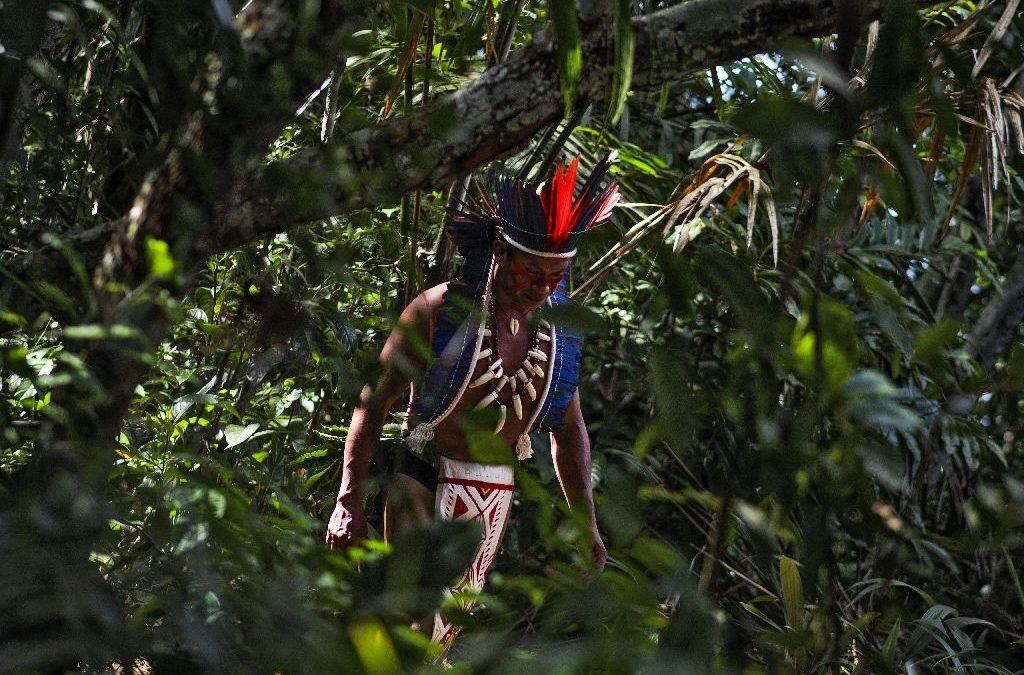Some of the world’s leading conservation groups are violating the rights of indigenous people by backing projects that oust them from their ancestral homes in the name of environmental preservation, a top UN expert said this week.
UN special rapporteur Victoria Tauli-Corpuz’s latest report documents killings, evictions and lands being used for resource extraction without native consent — practices that affect millions of indigenous people across Asia, Africa and Latin America.
“Projects supported by major conservation organizations continue to displace local peoples from their ancestral homes,” said Tauli-Corpuz, who gave a series of talks on her findings at the International Union for Conservation of Nature World Conservation Congress in Honolulu, the globe’s largest gathering of conservation leaders.
While she refrained from naming names in her report, she told AFP the groups include the World Wildlife Fund, Conservation International and the Wildlife Conservation Society.
“They know who they are,” she said in an interview on the sidelines of the IUCN meeting, which has drawn 9,000 heads of states and environmentalists to Hawaii for a 10-day meeting.
“From the reports I have received, these big conservation groups are some of the main groups that should account for what has happened.”
Tigers or people
In the past year, Tauli-Corpuz traveled to Honduras, Brazil, and to the Sami people in the Arctic regions of Finland, Norway and Sweden.
In Honduras, she met with an indigenous Lenca activist, Berta Caceres, four months before she was killed in March 2016 “because of her protests against the Agua Zarca dam project, even though she had been awarded precautionary protection measures from the Inter-American Commission on Human Rights,” said the report.
In Brazil, Tauli-Corpuz expressed deep concerns about “killings and violent evictions of the Kaiowa Guarani peoples in Mato Grosso (that) continue to take place.”
One of the main threats to the rights of the Sami people is the “increased drive to mineral extraction and the development of renewable energy projects,” added the report.
According to the Rights and Resources Initiative, a non-governmental organization that backs indigenous rights, other rights violations remain unresolved too, include the eviction of local people in India’s Kanha tiger reserve, even though evidence suggests people and tigers can co-inhabit the same area.
Nepal’s Chure region was declared a conservation area in 2014 without consulting the leaders of the indigenous communities, who represent a population of five million people.
Local people have also been forced from their homes in Cameroon and Kenya.
Native people “are best equipped to protect the world’s most threatened forests, and have been doing so for decades,” said RRI Coordinator Andy White.
“Yet many conservation organizations and governments still treat them as obstacles to conservation rather than partners.”
Expanding problem
Indigenous territory is increasingly being included in “protected areas,” which have nearly doubled over the past two decades, from nearly 3.5 million square miles (nine million square kilometers) in 1980 to six million square kilometers in 2000, said the report.
Traditional indigenous lands tend to be particularly precious because they make up less than one quarter of the Earth’s land surface but contain 80 percent of the planet’s biodiversity, it said.
Certainly, the areas in question are ultimately managed by governments.
But conservation groups “are the ones that facilitate the money,” Tauli-Corpuz said.
“They can do much more in terms of putting more pressure on the governments.”
‘Old story’
Conservation’s negative impact on indigenous people is “a constant and recurring theme since the establishment of the mandate of the Special Rapporteur on the rights of indigenous peoples in 2001,” said the report.
Indeed, the issue dates even further back, to when the United States violently expelled Native Americans from lands that were designated as Yellowstone National Park in 1872 and Yosemite National Park in 1890.
“That is an old story, and that is not the story that we as conservationists are trying to make happen today,” said John Robinson, executive vice president for conservation and science at the Wildlife Conservation Society.
“If you look at the special rapporteur’s report, she is mostly just talking about history.”
But Tauli-Corpuz, an indigenous leader from the Kankanaey Igorot people of the Cordillera Region in the Philippines, disagreed.
“They say it is an old issue, it is like history. I say of course not,” she told AFP.
“That is precisely why I am making the report. Because it continues up until the present.”
New challenges
World Wildlife Fund Director General Marco Lambertini called the report an “important contribution to advancing good practice on indigenous rights in conservation.”
“WWF is committed to working in collaboration with indigenous peoples and local communities for the preservation and sustainable use of the natural resources,” he added.
Conservation International’s chairman and CEO Peter Seligmann agreed.
“Bottom line — it is a core basic human right to make the choices and decisions of your own landscapes,” he told AFP.
“I don’t think there are any exceptions to that.”
Tauli-Corpuz plans to present her report at the UN General Assembly later this month, in the hopes of pressuring governments to cease rights abuses.
In the meantime, she said conservation groups “are not doing enough” to support indigenous rights.
“All this talk about conserving nature, sometimes it is just talk,” she said.
Source: AFP











